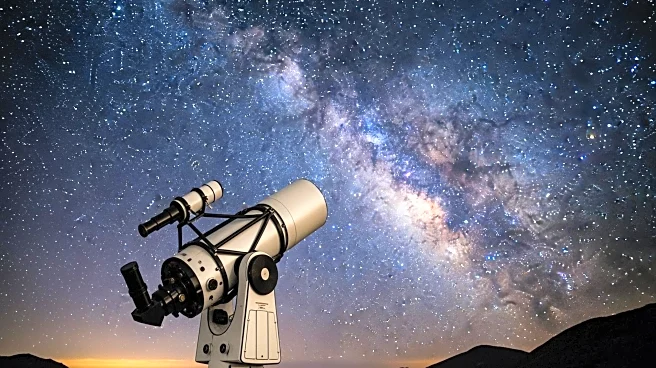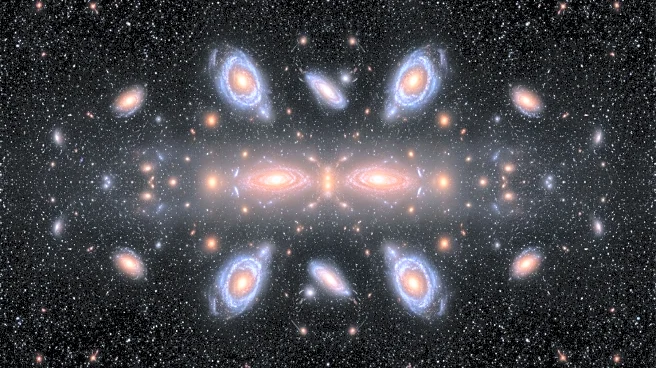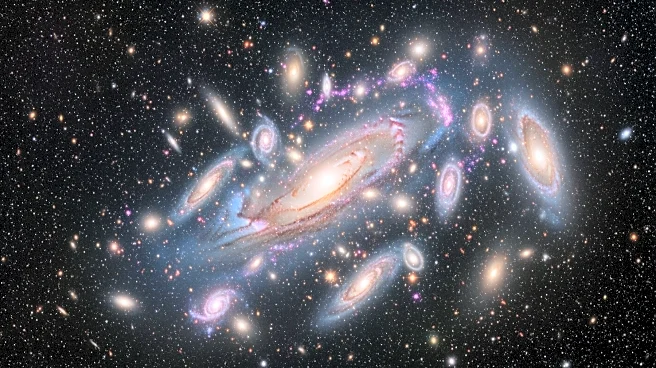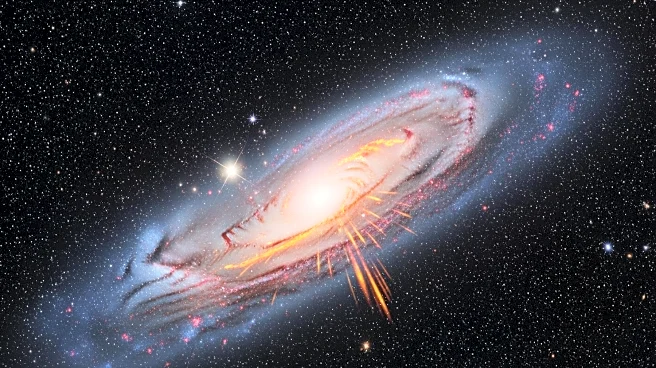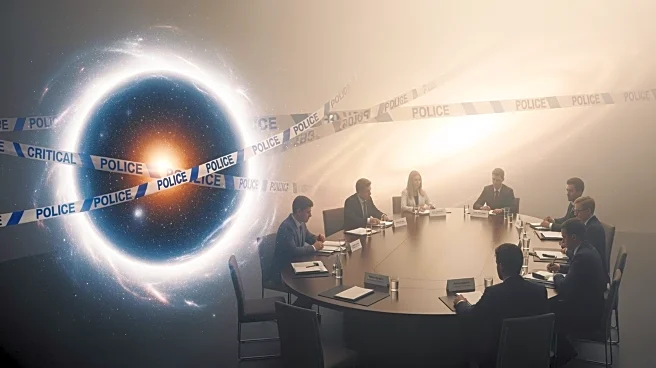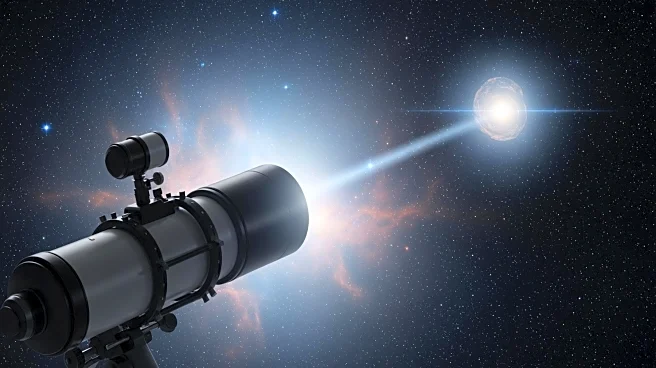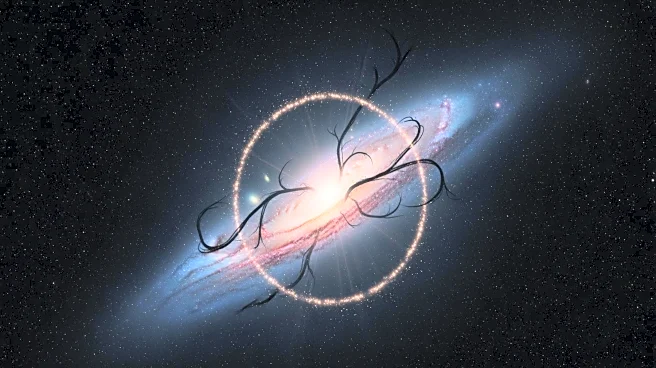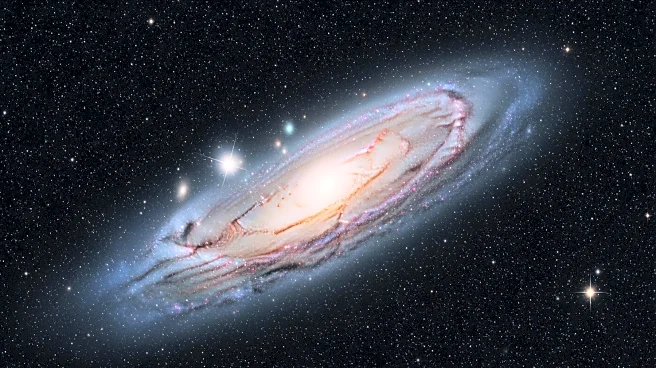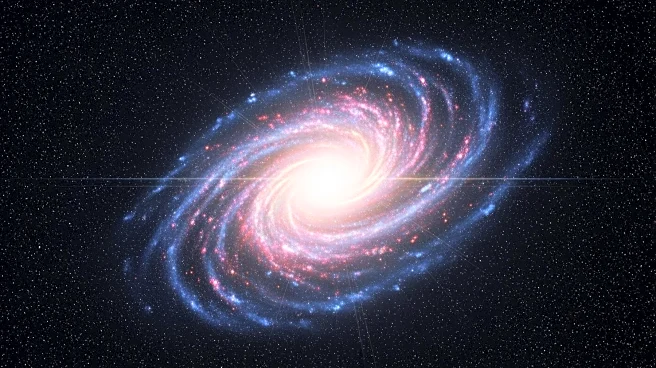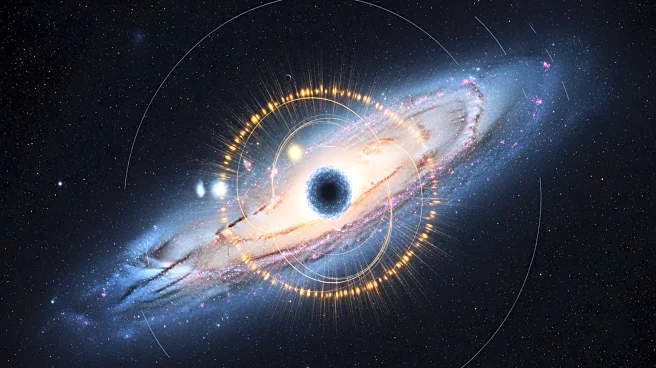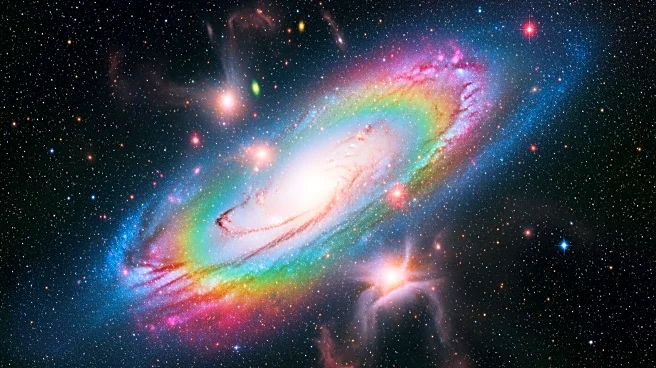What's Happening?
The Vera C. Rubin Observatory, located in the Chilean Andes, has commenced its ambitious mission to survey the southern sky every three nights. Named after astrophysicist Vera C. Rubin, the observatory
is equipped with the Simonyi Survey Telescope and the largest digital camera, the 3.2 gigapixel LSST Camera. A recent image captures the observatory beneath the Milky Way, showcasing the Large Magellanic Cloud. This marks the beginning of the Legacy Survey of Space and Time (LSST), a decade-long project aimed at recording the positions, brightness, and motions of billions of celestial objects. The observatory will detect up to 10 million transient changes in the sky nightly, including asteroids and supernovas.
Why It's Important?
The Vera C. Rubin Observatory's survey is set to revolutionize our understanding of the universe by providing an unprecedented amount of astronomical data. This initiative will enhance the study of dark matter and dark energy, contributing significantly to astrophysics. The observatory's ability to detect millions of changes in the sky each night will aid in tracking celestial phenomena and potentially discovering new objects. This project is crucial for advancing scientific knowledge and could lead to breakthroughs in understanding the cosmos, benefiting researchers and institutions globally.
What's Next?
As the observatory continues its survey, astronomers will analyze the vast data collected to uncover new insights into the universe's structure and behavior. The observatory's findings may prompt further research and collaboration among international scientific communities. Additionally, the data management challenges posed by the observatory's output will likely lead to advancements in data processing technologies, supporting future astronomical projects.
Beyond the Headlines
The Vera C. Rubin Observatory's work highlights the importance of international collaboration in scientific endeavors. The observatory's location in Chile underscores the global nature of astronomical research, with contributions from various countries and institutions. This project also emphasizes the role of technology in expanding our understanding of the universe, showcasing how cutting-edge equipment can facilitate groundbreaking discoveries.
